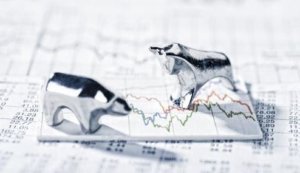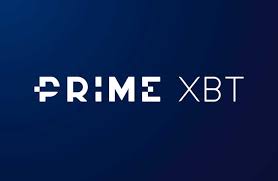Managing risk in volatile markets – Guest Editorial
Knowing that you can count on your broker is important, especially during times of high volatility and uncertainty says AxiTrader’s Milan Cutkovic

By Milan Cutkovic, AxiTrader
We are currently experiencing extraordinary market conditions, and volatility is likely to remain at levels not seen since the Financial Crisis of 2007-08. This provides traders with plenty of opportunities, but increases the risk at the same time. Having sound risk management rules in place is always important, especially during such times. In this article, we will discuss some key risk management rules that could prove to be helpful and discuss how to navigate the storm we are witnessing in financial markets.
Expect the unexpected
In the current environment, traders must accept that anything could happen. Few would have anticipated two weeks ago that Oil prices will decline more than 20 % in a single day or US/European stock indices could drop almost 10 % within a few hours. However, such sharp moves – in either direction – are likely to occur again in the near-future and traders should be prepared.
This means that holding a position over the weekend can become extremely risky, as there could be wide gaps after the market opens again on Monday. Even holding positions overnight in instruments such as Indices which are not open 24/5 is much riskier than usual. Traders who still opt to keep their positions over the weekend, might want to consider their position size and overall exposure.
Define your limits
It is important that you define how much risk you are willing to take per individual position and overall on your trading account. This will make it less likely that you overtrade or have much more exposure to the market than you planned to have.
Example 1: James is a conservative trader. He therefore sets the maximum risk he is willing to take per position to 0.2 % and the maximum risk on his trading account to 1 %. This means that he should not lose more than 1 % of his total balance even if all his positions get stopped out (although in case of negative slippage, the overall loss could get somewhat larger than 1 %).
Example 2: Matthew prefers to take more risk, and sets the maximum risk per trade to 1 % and maximum risk on his account to 5 %. He is therefore willing to lose 1 % of his total account balance per trade, and willing to lose up to 5 % on his total account balance on all combined positions.
You should have those rules in place before you start trading, and calculate the risk you will be taking before you enter the position.
Know when to take a break
Trading can be stressful, especially during times like this. It is therefore important to know when you have reached your limits, and take a break. For example, if you have hit the maximum amount of consecutive losses or the maximum drawdown you are willing to take on your account, you may want to rest and reconsider your approach before you restart your trading again.
This does not mean giving up on trading, but simply reflecting on the past few days and figuring out what went wrong and what you could have done differently. Perhaps there are only a few changes needed to your strategy, or you have been trading an instrument that is not suitable, or you need to adjust your risk management rules.
Position Sizing
When markets are moving sideways, traders can set tight stop loss orders and still make profitable trades. However, when markets are moving as rapidly as they are now, you must take into consideration that setting your stop loss order too close to your entry point might get you stopped out very quickly, especially if spreads in the market are wider than under normal conditions. To ensure you are not taking excessive risk by moving your stop loss order further away from your entry, you can reduce the position size to reduce the amount of risk you are taking.
Example: Matthew is considering buying GBP/USD at 1.16 with a stop loss order at 1.1450. He usually sets his stop loss orders 50-100 pips away from his entry, but he thinks that in the current market conditions a stop loss of 150 pips from his entry is needed. To make sure he is not exceeding his risk levels, he will reduce the position size to risk a maximum of 1 % of his account balance on this trade, according to his personal risk management rules.
Explore different markets
Traders are different – some prefer to trade during quiet market conditions, while others are fine with riding out rollercoaster markets. If you have been focusing only on one type of asset class or only a few currency pairs, this is the time to have a look at what else there is to trade. Volatility has increased across all asset classes, but if you scan through all the available trading instruments, you might find some where volatility has not gone completely through the roof yet. At the same time, traders who are looking for as much volatility as possible, might also discover some suitable trading instruments which they perhaps have not considered before.
AxiTrader offers a variety of different trading instruments – from the major FX pairs to the exotic ones, stock indices, commodities, precious metals and alternative assets.
Stability
Knowing that you can count on your broker is important, especially during times of high volatility and uncertainty. AxiTrader is proud of its excellent trading infrastructure and deep liquidity, and how well our infrastructure has delivered in such extreme circumstances. As a digital business, with teams across the globe we have scalable, highly redundant, secure and flexible systems and processes, which enable our staff to work remotely and maintain trading services to our clients.
We wish you successful trading and stay safe!
Find out more about AxiTrader here.
The information is not to be construed as a recommendation; or an offer to buy or sell; or the solicitation of an offer to buy or sell any security, financial product, or instrument; or to participate in any trading strategy. Readers should seek their own advice. Reproduction or redistribution of this information is not permitted.









